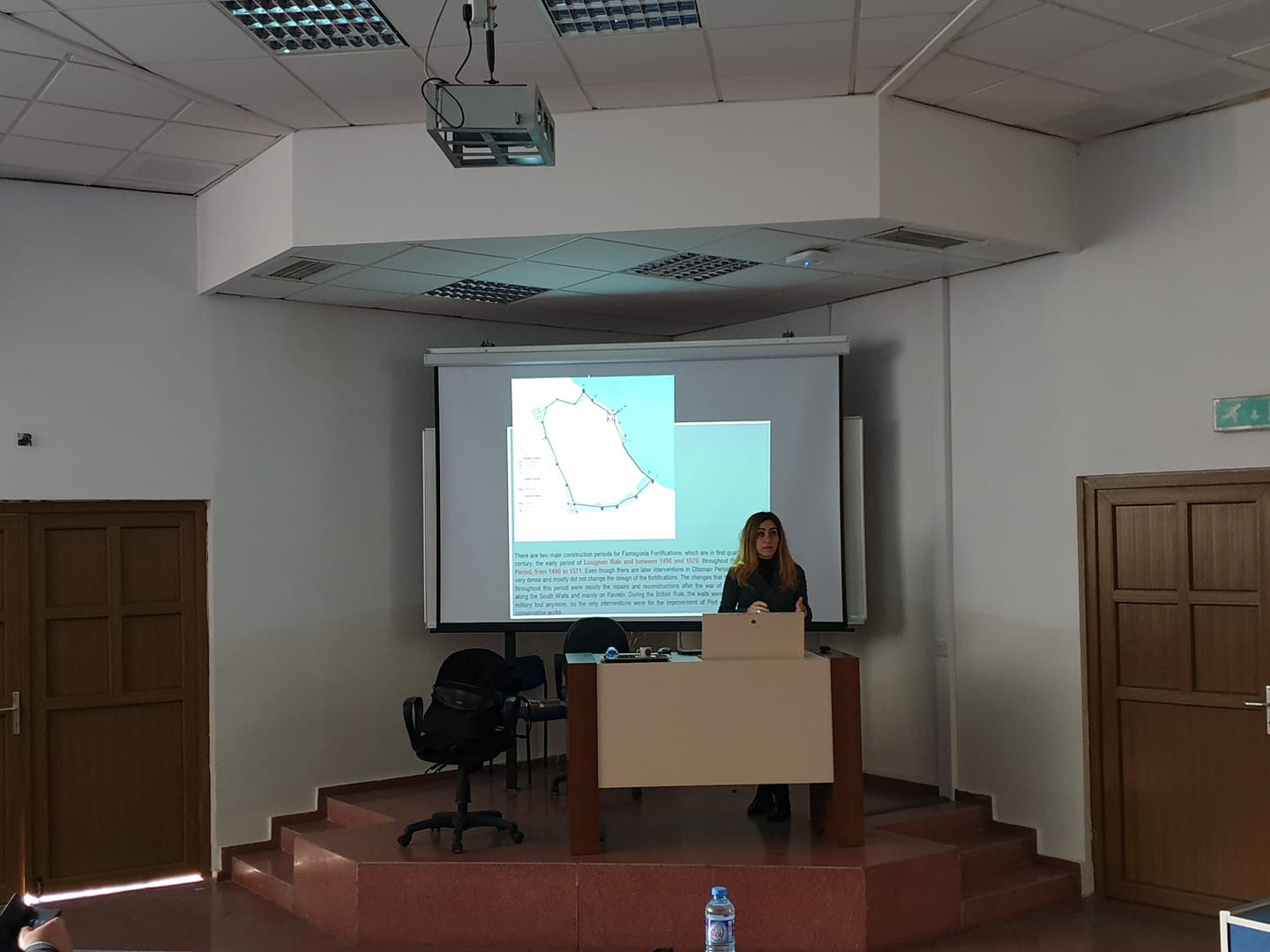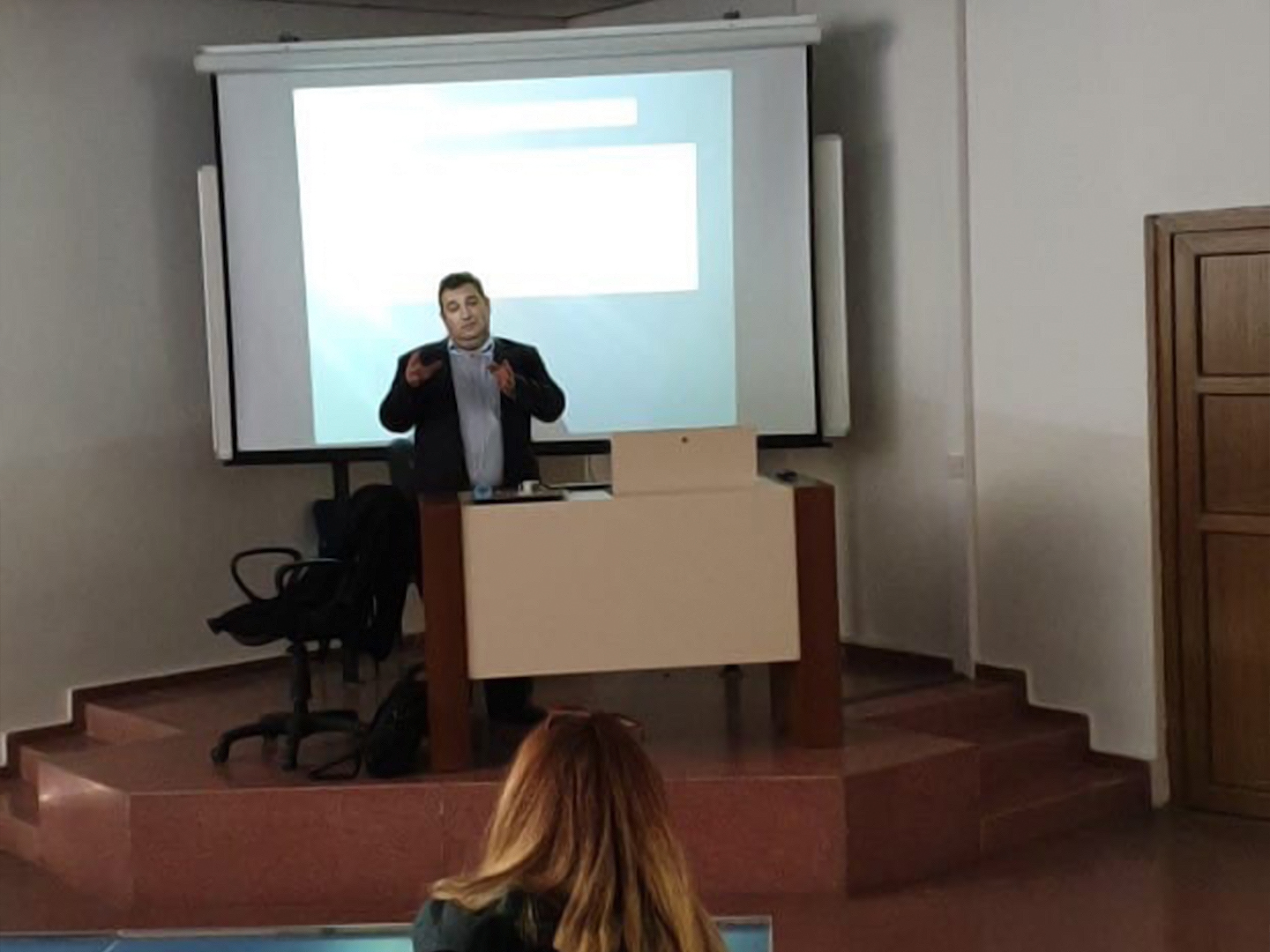List All News Articles2018, Cultural Heritage Conservation works of Cultural Heritage Technical Committee in Cyprus and works in Famagusta
Published Date: Thursday, 27 December 2018
On the 27th of December 2019, the Urban Research and Development Center held an event titled as "Cultural Heritage Conservation works of Cultural Heritage Technical Committee in Cyprus and works in Famagusta" in the faculty of Law, Eastern Mediterranean University. The event hosted guest speakers; Assoc. Prof. Dr Ege Uluca Tümer from the faculty of architecture, and sayin Ali Tuncay, a member of the Technical Committee on Cultural Heritage. Architectural students registered in ARCH311 (Principles of Conservation and Restoration) had attended the speeches in order to add up on their knowledge of conservation works that are taking place in Cyprus.
The speeches had discussed several conservation projects that were conducted in Famagusta and in other locations in Cyprus. Ali Tuncay started the speeches discussing many important points regarding the Technical Committee on Cultural Heritage. First, he cleared the aims and objectives of the committee, which highlighted the fact that preserving the historical building is not only about stones and structures, but about carrying the culturally rich values from the past to the future. Then, he briefly discussed the history, and structure of the committee. The committee, as explained by Ali Tuncay, was a result of an agreement between Greek and Turkish Cypriots under the auspices of the United Nations in 2008. The structure of the committee is composed by architects, archaeologists, art historians, and town planners from both sides of the island. After that, Tuncay discussed the selection strategy of the committee in conducting the conservation work. He pointed very clearly that the committee considered the urgent stability conditions of the historical building as their first priority in conducting conservation works, regardless of the political borders of the North or South. He also stressed that their conservation list considered the archaeological importance of the monuments. Also, Tuncay explained to the audience the resources of funding the committee gets/had got, which includes funds from the European Union, Evkaf Administration, the Church of Cyprus (Apostolos Andreas Monastry), and Honor Frost Foundation (used for the conservation of Kyrenia shipwreck). Finaly, Ali Tuncay explained for the students some of the conservation projects that was conducted by the committee; including Mosque in Deneia/Denya, Panagia Church in Trachoni/Demirhan, and Monastery of Apostolos Andreas.
Assoc. Prof. Dr Ege Uluca Tümer speech had included more technical explanation of conservation works for the students. She explained few projects that was conducted by the team including herself in Girne and Famagusta. The projects she explained included; Kyrenia shipwreck and Martinengo in Famagusta. Dr. Uluca Tümer concluded her presentation by answering questions asked by the students and the audience.

Assoc. Prof. Dr Ege Uluca Tümer

Ali Tuncay